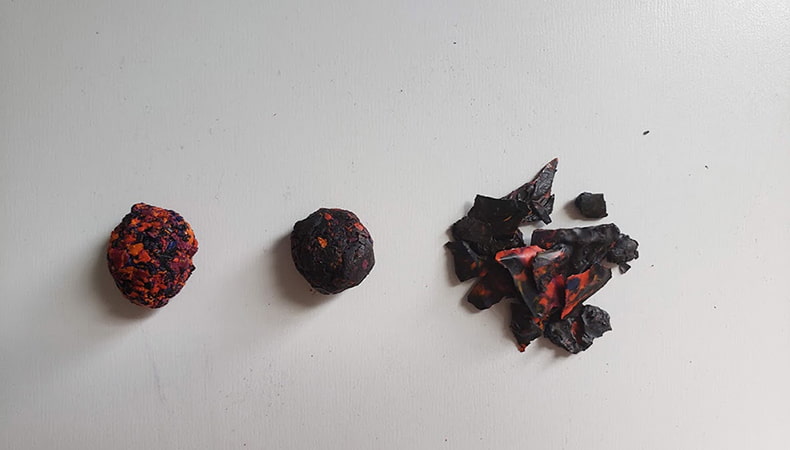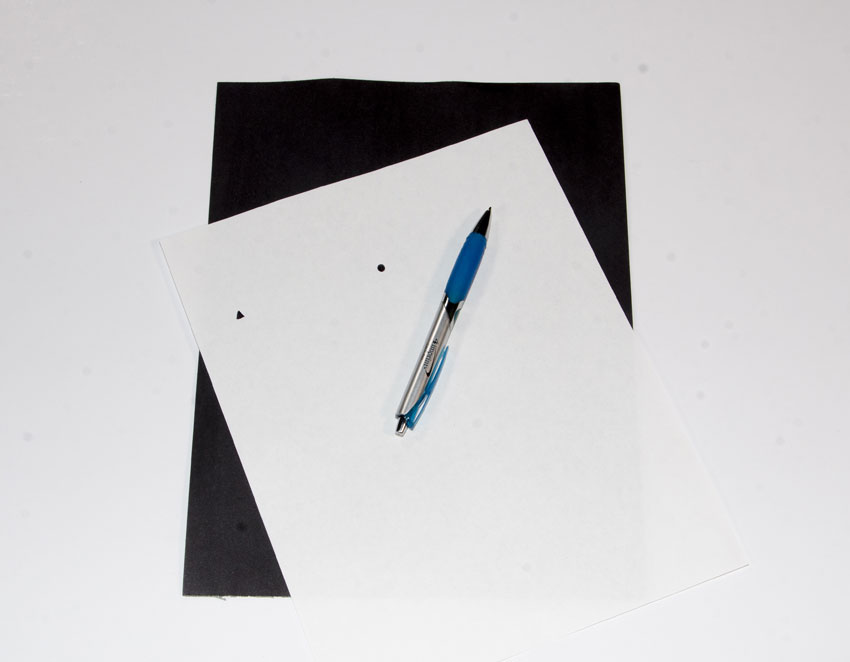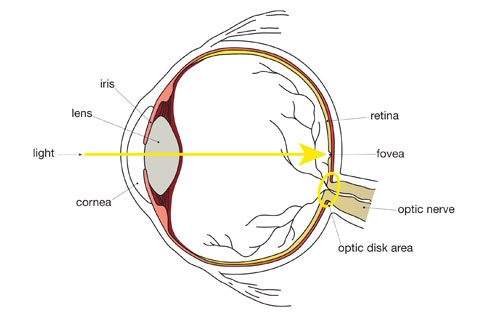Finding your blind spot
Share :
What you need
- Apiece of white paper
- A pencil or pen
Make it
- Using your pen or pencil, draw two dots on the paper about 8 cm apart.
- Draw a circle on the right dot and a square on the left dot, and make them about 3 cm in height. Fill them in solidly.
Test it
Hold the paper at arm’s length. Close your left eye (use your other hand to help, if needed) and with your open right eye, focus on the square. Slowly begin to bring the paper towards your face. Once you reach the right distance, the circle will disappear! Now try this again – this time closing your right eye and focusing your left eye on the circle.
Explain it
At the back of your eyes, you have structures called photoreceptors. Trap the light that comes in through your pupil, to be sent to the brain as visual information. The optic nerve exits the back of the eye in order to relay this information to the brain. The point where the optic nerve connects to the eye is called the optic disk, and here, there are no photoreceptors. This means no light is received here, leading to a blind spot in our vision!
Observe it
It’s hard to see this in use, because our brain does such a great job at making sure we never are affected by our natural blind spot! Each eye has a field of vision (the span of everything it can see), and the fields of both eyes overlap. So, when you have both eyes open, the other eye can compensate and fill in the missing information caused by your blind spot.
Go further
During this experiment, it appeared that the circle or the square disappeared. However, that’s not really true; your open eye actually just filled in the gap with what was surrounding it – the white paper! Now, using the image below, repeat the experiment – your open eye will fill in the yellow square with pink as it tries to piece together what should be there.
You may also be interested in

Broken pencil illusion
Seeing isn’t always believing, especially when refraction is involved! See how water bends light, “breaking” a pencil right before your eyes.

Design your own experiment
If you have a question about how the world works, you need to test it to find out the truth! Discover answers to your questions like a professional scientist.

Crayon rock cycle
Learn about the rock cycle with a fun science-at-home activity that shows how rocks form and change.



